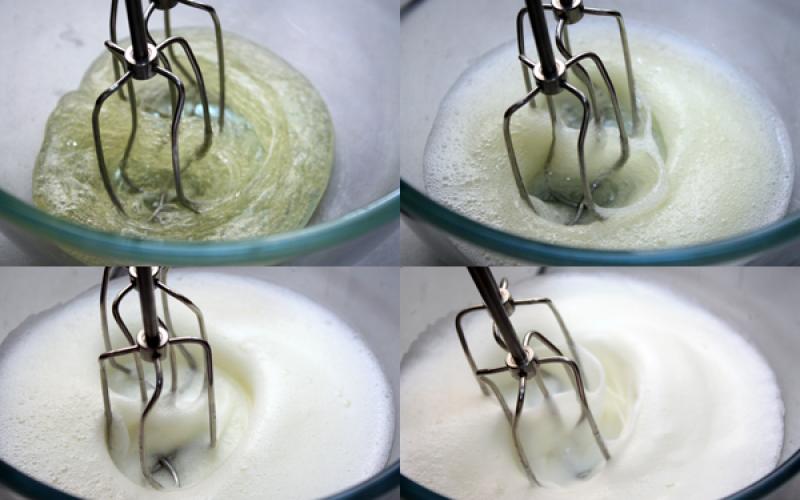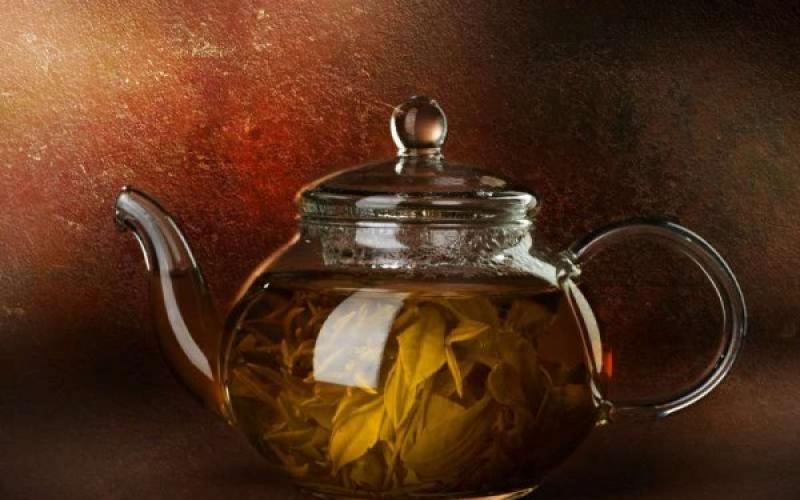Today's article is about growing oyster mushrooms at home. This mushroom successfully grows not only in the wild and in specially equipped places at home.
The shaded areas of the garden are perfect for growing this natural delicacy. Oyster mushroom belongs to the family of saprophytic fungi. They feed on non-living organic material. In the wild, oyster mushrooms are found on hardwood trees. Mushroom lovers have noticed that these mushrooms are much faster to grow on a specially prepared substrate than to find them in the wild.
Types of oyster mushrooms
Oyster mushroom feeds on inanimate wood and is found on stumps, fallen trees and dead trunks. This mushroom gained its fame after it began to be bred “at home”. Cultivated varieties of winter oyster mushrooms were bred from wild mushrooms - oyster mushrooms. They were named so because they bear fruit at temperatures ranging from 4 to 15°C. For the same reason, they are suitable for growing in the autumn-spring period.
The color of the fruit bodies of winter oyster mushrooms is very diverse: gray, blue, steel or dark brown. The pulp of mushrooms is dense, white, fragrant.
Summer oyster mushrooms originally from Florida. They bear fruit at higher temperatures of +15-25°C. In the hottest time of the year, when the temperature rises above + 28 ° C, the mycelium temporarily stops the formation of fruiting bodies. Summer oyster mushrooms, painted in colors from light brown to yellowish or almost white, have delicate mushroom formations.
For year-round cultivation of oyster mushrooms, the closest relative is better suited - oyster mushroom(Pleurotus pulmonarius). It forms mushroom bodies in the temperature range +6 +28°C. Her gray hat can be painted in various shades from light to dark. This fungus begins fruiting in spring and forms on the substrate until late autumn.
Oyster mushroom(Pleurotus comucopiae) - as a wild mushroom grows and is grown as a cultivated on Far East. He is gray
Wild-growing species of mushrooms in nature reproduce by spores. Mushroom growers, in "home" conditions, grow mycelium from these spores. Mycelium is a seed material from which mushrooms are then grown in a cultural way.
How to grow mycelium yourself
You can grow oyster mushroom mycelium at home. To do this, you need to prepare some tools and containers: test tubes, pipettes, tweezers, a thermometer, an alcohol lamp. From the materials you will need:
- potato,
- carrots or oats
- agar,
- 5% glucose solution,
- hydrogen peroxide.
It is important to remember that after each action with any tool, it must be treated with a disinfectant solution.
We will make a nutrient substrate for obtaining a mother culture with our own hands. We take potato-glucose, oatmeal or carrot agar as a basis. The prepared nutrient "broth" is poured into test tubes and subjected to sterilization. Prepared test tubes with a nutrient medium are installed obliquely, increasing the surface area.
For independent production of uterine mycelium, pieces of the mushroom cap are used. Before placing the hat piece in nutrient medium, it is disinfected in 3% hydrogen peroxide. A disinfected piece of a mushroom cap is placed on a frozen nutritious broth. A cork burned over a fire closes a sterile test tube.
After 14 days of storage of test tubes in a darkened room at a temperature of +24°C, mycelium will grow in test tubes, which is transferred to the substrate.
To grow high-quality mycelium at home, it is necessary to ensure sterility:
- Treat the work surface and tools with a disinfectant solution.
- In the room used, quartzization is carried out for at least 20 minutes.
- Tools are fired over an alcohol lamp.
- Hands are wiped with an antibacterial agent.
The intermediate mycelium of oyster mushroom is grown on grains of any cereals. The grains are boiled for 15 minutes, then they are dried. Calcium carbonate and gypsum are added to the dried grains.
AT glass jar, with a capacity of not more than 1 liter, pour the resulting grain mixture into two-thirds of the volume and sterilize. A certain amount of grown mycelium is added to the cooled sterile grain mass. Now leave the grain mixture for two to three weeks. The resulting mycelium can be stored for 3 months at 0 +20 degrees.
Properly grown, propagated intermediate oyster mushroom mycelium is a lush white bloom with a pleasant mushroom aroma. From the intermediate mycelium, according to exactly the same technology (on grain), the sowing mycelium is grown.
On the liter jar add 1 spoon of intermediate mycelium. The resulting mycelium is sown with a substrate to obtain a crop of mushrooms.
At home, it is very difficult to comply with all sterility requirements for obtaining mushroom mycelium, so it is easier to buy ready-made mycelium for sowing on a prepared substrate.
Oyster mushrooms at home in bags
Oyster mushrooms grow on almost any household waste. Suitable for this purpose any straw, cabbage stalks, corn stalks, sunflower seed husks or rice. The prepared material is crushed, mixed with gypsum and ground limestone (2% by weight of the substrate) and simple superphosphate, and urea (0.5% each).
The mixture is steamed with boiling water for 2-4 hours, then the humidity level is reduced to 75%. It is not difficult to determine the required level of humidity - water should not drain, but when pressing on the substrate, a certain amount of water should stand out.
Fill 3/4 of a 50L polyethylene bag with the prepared hot substrate and tie off the open side. When the substrate cools down to 25-28°C, seed mycelium is added to it. It is covered with a substrate by 10-15 cm. After that, holes of 15-20 mm in size are cut in the bag film in a checkerboard pattern at a distance of 15 cm.
 The holes can be vertical, with a slope - this does not affect the growth of mushrooms
The holes can be vertical, with a slope - this does not affect the growth of mushrooms 4-5 days after sowing, signs of mycelium growth will appear on the surface of the substrate. 8-10 days will pass and the white fluff will turn light brown, and plexuses of threads will appear on the substrate, which will tell you that the mycelium is ripe. Normally, the temperature of the substrate must be maintained no higher than + 28 ° C.
The bags with the substrate are installed vertically or suspended in a room with a temperature of 12-15°C and lighting of about 70-100W for 10 hours a day. Maintain constant humidity at 90%.
Oyster mushrooms on sawdust
In order for oyster mushrooms to grow on sawdust or shavings, they are poured into the furrow with a layer of 15-20 cm and spilled with a suspension of fungal spores. The sowing mycelium is introduced into the prepared holes, 5 to 7 cm deep. After the mycelium is introduced, they are covered with a substrate, covered with a film on top and the edges are pressed down. The mushrooms that appear are ready for harvest in 2-2.5 months.
Oyster mushrooms on a stump
Grain mycelium is used to grow oyster mushrooms outdoors. Its layer of 1.5-2 cm is applied to the surface of the stump. Then the stump is covered with plastic wrap, the edges are pressed to the ground. The best time for this is the beginning of April.
 Stumps waiting for the harvest
Stumps waiting for the harvest For 10 stumps you will need about 1 kg of grain mycelium. It is safer to introduce mycelium into 3-4 cm cuts and 5-6 cm wide. You can drill holes of the same depth and 1.5-2 cm in diameter. The surface is covered with fresh sawdust, the holes are closed with corks made of wood. The stump is covered with polyethylene, the edges are sprinkled with a layer of earth.
They also sell ready-made bars with oyster mushroom mycelium - they are inserted into a stumpHarvest can be harvested in 3.5-4 months. On such a stump, mushrooms grow for 5-7 years. Then the stumps crumble.
How to grow oyster mushrooms in the basement
The basement used for growing mushrooms must be frost-free, the air humidity maintained in it must be at least 60%.
Fruit bodies of mushrooms are formed at a temperature of +5 degrees. The final temperature for growing mushrooms is + 30 degrees.
 Growing oyster mushrooms on stumps in the basement - we provide dampness
Growing oyster mushrooms on stumps in the basement - we provide dampness Active growth and harvest
It is very interesting to observe the growth and formation of mushrooms - they grow quickly. You can involve children in the process of growing oyster mushrooms, they will have a lot of impressions.
With the onset of the first oyster mushroom embryos, the substrate is watered every other day, illuminated for 6-7 hours with fluorescent lamps with a power of about 100 watts. Daily, 2-3 hour ventilation. After the formation of the first mushrooms, water even more often. Water from the bottle is poured directly into the bag, untying it from above. Oyster mushrooms themselves are sprayed twice a day.
Bags in the spring, with the onset of stable heat, are taken out into the street, but they must be covered with a dense, opaque material. With the onset of active growth of mushrooms, the bags are untied and left open, but not in direct sunlight.

Mushrooms are cut when they grow up to 10 cm. They grow to this size in 3-5 days.
After a while, the yields collected from the bag begin to fall. Such a bag is taken to a dark place. After 1-2 months, the harvest of mushrooms from the "rested" bag can be harvested again.
 Growing oyster mushrooms in the basement in bags
Growing oyster mushrooms in the basement in bags The contents of bags on which mushrooms no longer grow can be used to fertilize vegetable beds - very good compost ripens in bags.
Is it profitable to grow oyster mushrooms for sale
It is possible to benefit from growing mushrooms for sale in the subsidiary farm. But this requires a lot.
- We need premises. Not very hot up to +30°С in summer and not freezing in winter. The premises must be ventilated and have lighting. Before growing mushrooms, any room must be treated from foreign fungi - mold.
- If you grow mycelium for growing mushrooms yourself, then you need a lot of time, because. the process is quite labor intensive. You can buy ready-made, but you need to be sure of the quality of the purchased material.
- You can make bags with the substrate yourself and sow them with purchased mycelium, but for this you need enough substrate raw materials.

4. You need to have enough time for constant care of plantings - watering, airing, monitoring the condition of the substrate. When mold appears, such bags must be urgently removed.
5. Also. Mushrooms release spores into the surrounding space, which are sure to get into the lungs when breathing, and this is very harmful to health.
6. But the most difficult thing, as in any business, is to enter the market with your product. Oyster mushroom is healthy and tasty, but perishable. It takes a lot of effort to sell it to the store. It is especially difficult to establish a mutually acceptable price - so that the goods do not stay in the store and bring profit to the manufacturer. In turn, the store may require a quality certificate.
But if there is a desire to do this business, if you think over the solution of emerging problems in advance, then with not the largest investments you can get a good income.
Even if you just grow a few kilograms of mushrooms for your family, you will get a lot of pleasure and feed your relatives.
Now you can grow oyster mushrooms at home instead of buying them from the store. Wish you luck!
In addition to pleasant taste, oyster mushroom is the cheapest in terms of technological costs. There are several options for growing oyster mushrooms, the authors offer a successfully tested and mastered, which is acceptable both for subsidiary farms of enterprises, farmers, private entrepreneurs and CSPs.
Characteristics of oyster mushroom. In nature, oyster mushroom grows on stumps and deadwood of poplars, oak, beech and other hardwoods. The optimum temperature for the growth of mycelium (mycelium) is 25-28 degrees Celsius, and for the formation of fruiting bodies - 13-17 degrees Celsius. The size of ear-like fruiting bodies is from 3 to 35 cm. At first they have dark color, then gray-brown, often with a bluish tint. From below, the fruiting bodies have a dense plate of light color. Leg size 2x8 cm, light or yellow-orange. The flesh of the mushroom is white, with a strong pleasant mushroom aroma. Oyster mushroom fruit bodies are fried, boiled, salted, pickled, preserved, mushroom powder, extract, etc. are made.
Room for growing oyster mushrooms. Growing mushrooms consists of two phases. The first is the reproduction of mycelium (mycelium). Given the temperature regime of this phase, it can be carried out in a ground room. The second phase is easier to organize in the basement.
Both ground and basement premises must be equipped with water, electricity and ventilation. In the ground it is necessary to install a water heater. Both rooms require thermometers to monitor the temperature. Regulate it with ventilation.
What to grow oyster mushrooms on? The substrate for growing oyster mushrooms can be chopped cereal straw, corn stalks, sunflower husks, hardwood sawdust, reeds and more.
It is necessary to grind to a size of 0.5-3 cm. The substrate must be free of mold and other visible fungal infections, and have a pleasant smell.
Room preparation. The premises must be whitewashed with ordinary lime and dried with active ventilation. Then sprinkle with a 4% solution of bleach, close for two days and then air for two days. Sanitization must be repeated annually.
Preparation of the oyster mushroom substrate. This operation is carried out in ground facilities. The crushed substrate is steamed with boiling water to destroy possible competitive fungi and microflora. The steamed substrate is tightly stuffed into containers and kept filled for 10-12 hours (preferably from evening to morning). After that, the wet substrate is removed from the container and laid out in a thin layer on a film for cooling.
Acquisition of oyster mushroom mycelium. It is necessary to find out in advance where the mycelium of the fungus is sold and order a certain amount. Upon receipt, special attention must be paid to quality. In appearance, it should be snow-white in color, interspersed with a darkish substrate, a pleasant "forest" smell.
Mycelium growth. At the bottom of a standard polyethylene bag, a cooled substrate is stuffed with a layer of up to 7-8 cm and leveled by hand. A densely packed white mycelium of the fungus is laid on top with a layer of 3 cm, for convenience it can be torn into pieces. Then a layer of substrate up to 15 cm thick is laid and compacted, and again a layer of mycelium, and so on - for how long the acquired mycelium lasts. The last layer should be a layer of substrate up to 7-8 cm thick. The entire contents of the bag are sealed, tied with twine and placed vertically. Be sure to pierce the bag with a clean nail (120-150 mm in size) and a lot of holes are formed over the entire surface of the bag, approximately one per 25-35 sq. cm, more often at the bottom so that the liquid does not stagnate and flow out. Through the transparent film of the bag, light layers of mycelium and dark layers of the substrate are visible.
The optimum temperature in the room should be between 18-26 degrees. After 3-4 days, the mycelium will begin to grow into the substrate, and after 10-15 days, the entire contents of the bag will turn white. After that, it is untied and the resulting mycelium begins to multiply again. From one full bag of finished mycelium, 8-10 bags of a layer-by-layer mixture with a substrate are filled for reproduction. When a sufficient number of bags with ready-made mycelium is obtained, 8 bags from every 10 are transferred for fruiting, and 2 remain for further germination of the mycelium mass. If the temperature exceeds 28 degrees, the room is ventilated.
Transfer to fruition. The whitened substrate is kept in bags for 5-6 days, during which time it matures, becomes dense, the so-called "monolith". In order for the fruiting of the fungus to be active, it is stimulated by keeping bags with mycelium for three days at a temperature of plus 3-5 degrees. Then choose one of two methods.
The first is that holes with a diameter of 3-5 cm are cut in the bags to form the fruiting bodies of the fungus - one hole per 100-150 sq.cm. The bags are transferred to the basement, where the temperature is maintained within plus 10-16 degrees.
Bags with mycelium in the basement are placed vertically at a distance of 30-40 cm, so that there is space for the formation of oyster mushroom fruiting bodies. For convenience, the bags have ribbons in three rows. A technological passage 70-100 cm wide is left between the tapes for the convenience of watering and harvesting. If the height of the room allows, lattice racks are equipped, which significantly expands the usable production area. Subject to all the requirements of the technology, fruiting begins in about 10 days. The bags are slightly moistened (once a day).
The second method involves the release of the "monolith" of the substrate from the bags completely after three days of cooling. They are placed vertically in the basement, as in the first method. In the first 5-6 days, the bags are not watered. Then the entire monolith is poured with water at room temperature. Moisturize 2-5 times a day, depending on the humidity of the air. During the fruiting period, carbon dioxide accumulates in the basement, so the room must be ventilated once a day.
lighting requirements. The first 6-7 days in the basement, lighting is not required, and then it is necessary to provide from 60 to 160 lux at the level of bags with mycelium. At first, the heads of the fungus are whitish in color, then darken, become grayish-brown, and brighten at the final stage. This is the signal for the harvest. After 2.5-3 weeks, the second wave of fruiting begins, but its productivity is approximately three times lower. Harvest can be obtained without lighting, but it will be lower. On a good substrate (for example, corn cobs), up to 35-45 kg of mushrooms are obtained in two fruiting waves from every 100 kg of substrate.
After the harvesting of the second wave is over, the bags with monoliths are taken out of the premises, sanitized and a new batch of bags is brought in for fruiting. For a year, 5-6 cycles can be carried out.
The traditional substrate for growing oyster mushroom fruiting bodies is cereal straw: wheat, rye, barley, oats, and millet. Shredded corn stalks and cobs, rice straw, and waste from the cotton processing industry are also widely used.
Preparation of the substrate involves heating it to 60-80°C in order to partially sterilize the medium. To date, there are several ways of heat treatment of plant substrates:
1) soaking hot water;
2) step heat treatment;
3) fermentation.
Soaking with hot water
The simplest of these methods is soaking the straw in hot water (95°C) for a day. Due to this, a partial destruction of the membranes of plant cells and the transfer of lignin into forms accessible to the mycelium of the fungus are achieved. Soaking is carried out in metal tanks and containers of various capacities. Plant substrates are steamed in feed steamers, maintaining a temperature of 50-60°C.
Heat treatment and fermentation
It is carried out in special chambers and tunnels, similar to those used in the preparation of oven composts. Before starting, the straw is crushed to a size of 1-3 cm and moistened so that the relative humidity is 70-75% . For this, approximately 3000-4000 liters of water per 1 ton of material are used.
Stepped heat treatment of the substrate consists in heating it to 80°C, cooled and reheating to 60-80°C. At the same time, almost all microflora dies, and the main components of the substrate pass into forms accessible to the mycelium. Heat treatment is carried out without fresh air supply.
Fermentation (pasteurization) of the substrate differs from heat treatment in that with a short-term increase in temperature to 55-60 ° C, partial sterilization takes place and conditions are created for the development of beneficial microflora, which creates a favorable environment for the growth of oyster mushroom mycelium. Fermentation is carried out with the supply of fresh air. When using this method of preparing the substrate, the risk of infection is much lower than with heat treatment.
Inoculation (seeding) and development of mycelium
Oyster mushroom mycelium is prepared in the same way as champignons. After finishing straw processing and cooling to 28-30°C, it is stuffed into containers (bags, cassettes, etc.) with the simultaneous introduction of seed mycelium in the amount of 3-5% by weight of the substrate. The substrate after sowing must be protected from drying out, which is best provided by a polyethylene film perforated at the bottom of the bags or cassettes. The most common containers for growing oyster mushrooms are transparent plastic bags for 15-30 kg of substrate.
After inoculation, the bags or cassettes are placed in the mycelium growth chambers. The air temperature in them is 22-24°C, humidity 60-65%, ventilation - 1-2 volumes per hour. Since light slows down the growth of oyster mushrooms, the room should be dark.. In the case of using bags, they are stacked one on top of the other four in a row, and the cassettes are installed in pairs, leaving passages of 1.5-2 m. Depending on the type of substrate that is used, its fouling with mycelium lasts 10-20 days.
Fruiting
After weaving the substrate with white oyster mushroom mycelium, bags or cassettes are transported to the fruiting room. When using “winter” strains, the containers with the substrate are cooled in a special room or outside at a temperature of 2-4°C for 1-2 days before being placed in the fruiting chamber. The temperature in cultivation facilities, depending on biological features cultivated variety, maintain at the level of:
- 10-13°C - for "winter";
- 20-25°C - for "summer";
- 12-25°C - for "intermediate" strains.
Humidity should be 85-90%, ventilation - 2-3 volumes per hour. It is also necessary providing lighting for 8-10 hours a day, daily norm of light - 920 lx. Mushrooms react to insufficient illumination by stretching the legs and reducing the cap. In complete darkness, only the rudiments of fruiting bodies are formed, resembling cauliflower.
7-10 days after substrate transfer small tubercles appear on the surface of the mycelium in the fruiting chamber - primordia. In the places of their formation on the bags, cuts 10-15 cm long should be made. After the appearance of the rudiments of fruiting bodies, an 8-10-fold air exchange is provided, its humidity is maintained at the level 80-85% and the same temperature as for stimulating fruiting.
Harvesting
First fruiting wave
The first mushroom picking (the first fruiting wave) begins after 10-14 days after placing the bags in the fruiting chamber, lasts 5-7 days and has the highest yield.
Second wave of fruiting
To hasten the onset of the second wave, ventilation is reduced up to 2-3 volumes per hour, for shock strains reduce temperature up to 5-8°C, increase humidity up to 85-90%. After 10-14 days, under this regime, the second wave of fruiting occurs, which usually amounts to 40-50% of the first wave in yield.
As a rule, harvesting is limited to two waves. The yield of intensively cultivated oyster mushroom is 18-40% of the mass of the substrate.
Qualities of mushrooms suitable for consumption
Fruiting bodies of the fungus for fresh consumption and for industrial processing must comply with the following requirements. Must be:
- fresh, fleshy, clean, firm;
- dry or naturally moist, without foreign smell;
- the pulp should be white, at the break it should not change color to light gray;
- the size of the cap along the largest transverse diameter is not less than 4 cm and not more than 10 cm, the leg length is not more than 4 cm.
One cycle of growing oyster mushrooms in an intensive way lasts 2-2.5 months. Thus, with year-round cultivation, 5-6 cycles can be carried out.
GROWING Oyster mushroom
Tags: Mushroom growing
print version
In addition to pleasant taste, oyster mushroom is the cheapest in terms of technological costs. There are several options for growing oyster mushrooms, the authors offer a successfully tested and mastered, which is acceptable both for subsidiary farms of enterprises, farmers, private entrepreneurs and CSPs.
Characteristics of oyster mushroom. In nature, oyster mushroom grows on stumps and deadwood of poplars, oak, beech and other hardwoods. The optimum temperature for the growth of mycelium (mycelium) is 25-28 degrees Celsius, and for the formation of fruiting bodies - 13-17 degrees Celsius. The size of ear-like fruiting bodies is from 3 to 35 cm. At first they have a dark color, then gray-brown, more often with a bluish tint. From below, the fruiting bodies have a dense plate of light color. Leg size 2x8 cm, light or yellow-orange. The flesh of the mushroom is white, with a strong pleasant mushroom aroma. Oyster mushroom fruit bodies are fried, boiled, salted, pickled, preserved, mushroom powder, extract, etc. are made.
Room for growing oyster mushrooms. Growing mushrooms consists of two phases. The first is the reproduction of mycelium (mycelium). Given the temperature regime of this phase, it can be carried out in a ground room. The second phase is easier to organize in the basement.
Both ground and basement premises must be equipped with water, electricity and ventilation. In the ground it is necessary to install a water heater. Both rooms require thermometers to monitor the temperature. Regulate it with ventilation.
What to grow oyster mushrooms on? The substrate for growing oyster mushrooms can be chopped cereal straw, corn stalks, sunflower husks, hardwood sawdust, reeds and more.
It is necessary to grind to a size of 0.5-3 cm. The substrate must be free of mold and other visible fungal infections, and have a pleasant smell.
Room preparation. The premises must be whitewashed with ordinary lime and dried with active ventilation. Then sprinkle with a 4% solution of bleach, close for two days and then air for two days. Sanitization must be repeated annually.
Preparation of the oyster mushroom substrate. This operation is carried out in ground facilities. The crushed substrate is steamed with boiling water to destroy possible competitive fungi and microflora. The steamed substrate is tightly stuffed into containers and kept filled for 10-12 hours (preferably from evening to morning). After that, the wet substrate is removed from the container and laid out in a thin layer on a film for cooling.
Acquisition of oyster mushroom mycelium. It is necessary to find out in advance where the mycelium of the fungus is sold and order a certain amount. Upon receipt, special attention must be paid to quality. In appearance, it should be snow-white in color, interspersed with a darkish substrate, a pleasant "forest" smell.
Mycelium growth. At the bottom of a standard polyethylene bag, a cooled substrate is stuffed with a layer of up to 7-8 cm and leveled by hand. A densely packed white mycelium of the fungus is laid on top with a layer of 3 cm, for convenience it can be torn into pieces. Then a layer of substrate up to 15 cm thick is laid and compacted, and again a layer of mycelium, and so on - for how long the acquired mycelium lasts. The last layer should be a layer of substrate up to 7-8 cm thick. The entire contents of the bag are sealed, tied with twine and placed vertically. Be sure to pierce the bag with a clean nail (120-150 mm in size) and a lot of holes are formed over the entire surface of the bag, approximately one per 25-35 sq. cm, more often at the bottom so that the liquid does not stagnate and flow out. Through the transparent film of the bag, light layers of mycelium and dark layers of the substrate are visible.
The optimum temperature in the room should be between 18-26 degrees. After 3-4 days, the mycelium will begin to grow into the substrate, and after 10-15 days, the entire contents of the bag will turn white. After that, it is untied and the resulting mycelium begins to multiply again. From one full bag of finished mycelium, 8-10 bags of a layer-by-layer mixture with a substrate are filled for reproduction. When a sufficient number of bags with ready-made mycelium is obtained, 8 bags from every 10 are transferred for fruiting, and 2 remain for further germination of the mycelium mass. If the temperature exceeds 28 degrees, the room is ventilated.
Transfer to fruition. The whitened substrate is kept in bags for 5-6 days, during which time it matures, becomes dense, the so-called "monolith". In order for the fruiting of the fungus to be active, it is stimulated by keeping bags with mycelium for three days at a temperature of plus 3-5 degrees. Then choose one of two methods.
The first is that holes with a diameter of 3-5 cm are cut in the bags to form the fruiting bodies of the fungus - one hole per 100-150 sq.cm. The bags are transferred to the basement, where the temperature is maintained within plus 10-16 degrees.
Bags with mycelium in the basement are placed vertically at a distance of 30-40 cm, so that there is space for the formation of oyster mushroom fruiting bodies. For convenience, the bags have ribbons in three rows. A technological passage 70-100 cm wide is left between the tapes for the convenience of watering and harvesting. If the height of the room allows, lattice racks are equipped, which significantly expands the usable production area. Subject to all the requirements of the technology, fruiting begins in about 10 days. The bags are slightly moistened (once a day).
The second method involves the release of the "monolith" of the substrate from the bags completely after three days of cooling. They are placed vertically in the basement, as in the first method. In the first 5-6 days, the bags are not watered. Then the entire monolith is poured with water at room temperature. Moisturize 2-5 times a day, depending on the humidity of the air. During the fruiting period, carbon dioxide accumulates in the basement, so the room must be ventilated once a day.
lighting requirements. The first 6-7 days in the basement, lighting is not required, and then it is necessary to provide from 60 to 160 lux at the level of bags with mycelium. At first, the heads of the fungus are whitish in color, then darken, become grayish-brown, and brighten at the final stage. This is the signal for the harvest. After 2.5-3 weeks, the second wave of fruiting begins, but its productivity is approximately three times lower. Harvest can be obtained without lighting, but it will be lower. On a good substrate (for example, corn cobs), up to 35-45 kg of mushrooms are obtained in two fruiting waves from every 100 kg of substrate.
After the harvesting of the second wave is over, the bags with monoliths are taken out of the premises, sanitized and a new batch of bags is brought in for fruiting. For a year, 5-6 cycles can be carried out.
Oyster mushroom
Cultivation of mushrooms. Short story. Oyster mushroom - mycelium, wood. Growing oyster mushrooms - methods, features, recommendations and tips. Modes.
Artificial cultivation of wood-destroying mushrooms has a long history. Shiitake mushroom (Lentinus edodes (Berk.) Sing) has been a common crop in Southeast Asia for over 2000 years. It grows naturally in Japan, China and other countries. Eastern countries on oak and hornbeam. It occupies a significant place in the diet of the population of these countries. 130 thousand tons of shiitake are grown annually in Japan,
In European countries and North America In the last decade, oyster mushroom (Pleurotus ostreatus (Jacg.ex Fr.) Kumm) has been more actively cultivated among tree saprophytes ( ). This mushroom can grow on the trunks of many deciduous trees, but it grows best on various types of poplar and willow, on hornbeam, beech and oak. On the deciduous trees with soft wood (poplar, willow, hornbeam), oyster mushroom mycelium develops rapidly, but its yield is lower than in a fungus that grows on trees with hard wood (beech, oak), on which mycelium develops more slowly. Wood, which is a substrate for oyster mushrooms, must be healthy, not affected by other fungi.
For the cultivation of oyster mushroom, it is best to use freshly cut wood containing enough water for the development of the fungus. It is necessary to saw the trunk into bars only before the inoculation (introduction) of the mycelium. You should not take trunks with a diameter of less than 15 cm, since the yield of mushrooms on them will be low. The trunks must be sawn into bars of the same length (30-35 cm), making sure that the bars are not contaminated with earth.
They are installed in cellars vertically to each other, placing mycelium at one end. The clean end of the next bar is placed on it, and the opposite end is again inoculated. The height of the column is adjusted to 2-2.5 m.
The layer of mycelium on the bars should be at least 1 cm thick.
A board with a cross section of 5-6 cm is placed on top of the upper bar. A layer of straw and a layer of soil (15-20 cm) are applied to it. This contributes to the preservation of humidity, constant temperature and thanks to this - a good growth of mycelium. Through this "lid" the bars receive a sufficient amount of air.
In dry weather, the basement must be moistened so that water does not fall on the bars. In cellars for growing oyster mushrooms ground water should not come close to the surface, and the relative humidity of the air should be maintained above 90%. After 2-3 months, the oyster mushroom mycelium develops well on the entire bar.
It is necessary to inoculate the bars with mycelium in the spring, when the temperature optimal for its development is maintained in the cellars without special heating.
Under natural conditions, oyster mushroom bears fruit in late September - October. That is why the bars pierced with mycelium at the end of August must be transferred for fruiting to special forest glades or to a sparse forest, where there is a lot of moisture (but not ground) and no direct sunlight, it is very desirable that there be clean water that can be used for glaze. The bars are set in such a way that their lower part deepens into the soil by a few centimeters.
Fruiting bodies appear one to three weeks after the transfer of the bars from the cellars (Fig.). Their growth is facilitated by low night temperatures (4-8 ° C). Before fruiting and during it, it is very important to water the bars. Herbs and weeds growing in the forest do not harm mushrooms, on the contrary, they protect the fruiting bodies of the fungus from dirt that falls on them during rain or watering. It is also necessary to ensure that the bars are not moved, as the mycelium penetrates the soil, receiving water and inorganic nutrients from it. The fruiting bodies that have arisen on the bars have dark gray caps that brighten over time.
It is important to determine the time of collection of oyster mushrooms. If the fruiting bodies are harvested prematurely, then the harvest will not reach its maximum, and when late, the quality of the mushrooms will be low. It is impossible to determine the harvesting time solely by the size of the fruiting bodies, because their sizes depend on the diameter of the bars: the smaller the diameter, the smaller the size of the fruiting bodies. However, experience shows that 7-10 days after the appearance of primordia (rudiments) of fruiting bodies on the bars, mushrooms can be collected. This period may increase by several days only due to cold weather. Oyster mushroom fruit bodies generally appear together, so they are harvested from one bar at the same time. Cut the mushrooms with a sharp stainless steel knife. Contaminated fruiting bodies should be cleaned immediately so that they do not stain neighboring ones.
Most big harvest falls within the first year.
Fruiting oyster mushroom ordinary lasts 3-5 years. In subsequent years, the bars do not require special care. The whole area must be kept clean, and in the fall, especially before fruiting, it should be watered.
The yield depends on the quality of wood and mycelium, weather, irrigation, sanitary condition of the forest, etc. Within three years, an average of 12-15 kg of mushrooms is harvested from 1 quintal of wood.
If bars from species with hardwood are used, then fruiting lasts 4-5 years and the yield from 1 quintal of wood increases to 19-20 kg.
Thus, the extensive method of cultivation of oyster mushroom described above is simple and cheap. However, the quality and quantity of fruiting bodies obtained depend on environmental factors, therefore, it is impossible to regulate this influence.
A different picture with an intensive method of cultivation, this system differs from the extensive one mainly in the substrate (waste of agricultural plants) and the duration of development (the whole process takes 9 weeks, not 3-5 years). The advantages of intensive cultivation are that this process can be controlled. Mushrooms develop in special rooms where the microclimate is regulated, where it is easier to fight diseases and pests and you can cultivate them regardless of the season, that is, all year round. However, these growing methods are much more expensive.
There are several ways to intensively grow oyster mushrooms. The two most common are sterile and non-sterile.
Oyster mushroom mycelium can develop on various materials plant origin: on straw, corn stalks and cobs, other agricultural waste, and reeds. However, under natural conditions, oyster mushroom does not develop on these materials, because its mycelium cannot compete with mold fungi. Under artificial conditions, the growth of these competitors can be slowed down and even completely stopped.
The sterile method, patented in 1966, was practically the first industrial method for growing oyster mushroom. Humidified nutrient medium is heated in a sealed container to a temperature of 120 ° C and sterilized. Then the mycelium is introduced into the medium, the dishes are closed. The entire nutrient medium is quickly permeated with mycelial hyphae. The reliability of this method is ensured by autoclaving the substrate, as a result of which all competitive microorganisms and fungi die, and the oyster mushroom mycelium develops freely.
With the non-sterile method, it is only necessary to pasteurize the substrate, all other processes take place under non-sterile conditions. In a nutrient medium, useful microorganisms are artificially propagated, which prevent the development of competitors of oyster mushroom. This allows not to sterilize the nutrient medium and eliminates the need to keep the mycelium in a sealed container. Thanks to this, it is possible to establish a fast industrial economically profitable cultivation of oyster mushroom.
The substrate is crushed, moistened with water, put into boxes and placed in a biochamber, where it is pasteurized and enriched for useful microorganisms, then the substrate is packed in polyethylene film bags or in boxes covered with this film, after which the substrate is inoculated with mycelium.
Bags or boxes are kept at a temperature of 20 ° C until the hyphae of the fungus are able to form fruiting bodies. After that, bags or boxes with a substrate intertwined with mycelium are transferred to special growth rooms.
Oyster mushroom has one interesting feature: its fruiting bodies develop better on a vertical plane than on a horizontal one. That is why it is necessary to build a wall from boxes and bags, after which the massive growth of mushrooms begins.
The growth room should be maintained at a temperature of 15-16 ° C, it needs fresh air, high humidity and sufficient lighting. Harvest can be harvested in 1-2 weeks.
Since oyster mushroom uses nutrients very quickly, the first harvest of these mushrooms is 75-80% of the theoretically calculated yield. That is why after the first harvest it is advisable to replace the nutrient medium with a new one.









